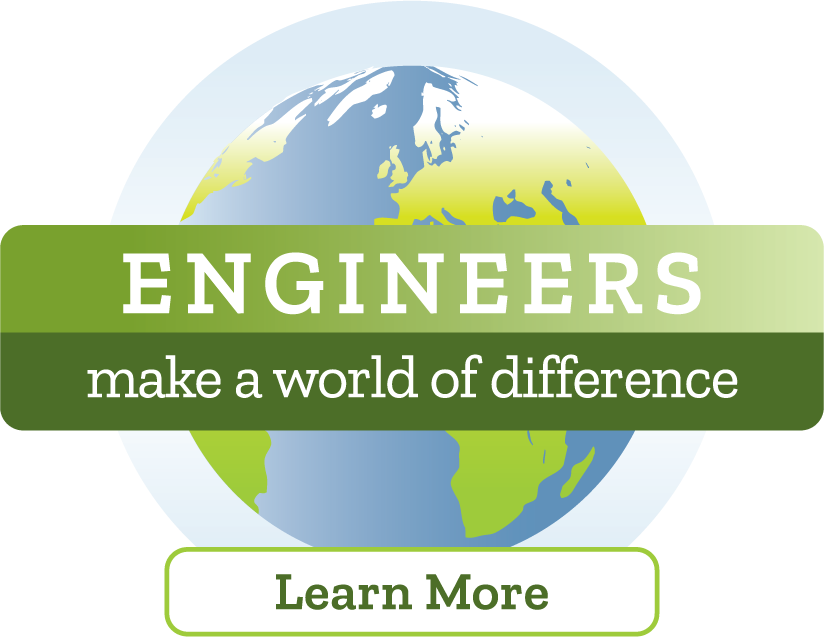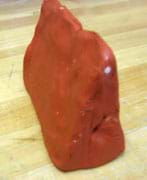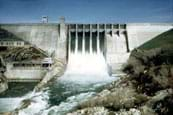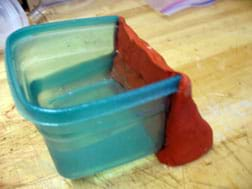

Units serve as guides to a particular content or subject area. Nested under units are lessons (in purple) and hands-on activities (in blue).
Note that not all lessons and activities will exist under a unit, and instead may exist as "standalone" curriculum.
| Unit | Lesson | Activity |

Students learn how the force of water helps determine the size and shape of dams. They use clay to build models of four types of dams, and observe the force of the water against each type. They conclude by deciding which type of dam they, as Splash Engineering engineers, will design for Thirsty County. This engineering curriculum aligns to Next Generation Science Standards (NGSS).

Every dam is a unique structure, and provides engineers with the opportunity for much creativity. In designing a dam, engineers consider the specific existing environmental conditions, the forces expected to act upon the dam, and the suitability of different dam design types. Their completed designs must fulfill each community's particular requirements.
Each TeachEngineering lesson or activity is correlated to one or more K-12 science, technology, engineering or math (STEM) educational standards.
All 100,000+ K-12 STEM standards covered in TeachEngineering are collected, maintained and packaged by the Achievement Standards Network (ASN), a project of D2L (www.achievementstandards.org).
In the ASN, standards are hierarchically structured: first by source; e.g., by state; within source by type; e.g., science or mathematics; within type by subtype, then by grade, etc.
3-5-ETS1-1. Define a simple design problem reflecting a need or a want that includes specified criteria for success and constraints on materials, time, or cost. (Grades 3 - 5)
Do you agree with this alignment? Thanks for your feedback!
Alignment agreement: Thanks for your feedback!
Alignment agreement: Thanks for your feedback!
Alignment agreement: Thanks for your feedback!
3-5-ETS1-3. Plan and carry out fair tests in which variables are controlled and failure points are considered to identify aspects of a model or prototype that can be improved. (Grades 3 - 5)
Do you agree with this alignment? Thanks for your feedback!
Alignment agreement: Thanks for your feedback!
Alignment agreement: Thanks for your feedback!
Different solutions need to be tested in order to determine which of them best solves the problem, given the criteria and the constraints.
Alignment agreement: Thanks for your feedback!
Each group needs:
Embankment dam materials for each group:
Gravity dam materials for each group:
Arch dam materials for each group:
Buttress dam materials for each group:
How do engineers decide how large or strong to build a dam? Is the weight of the water pushing against the side of the dam important? Did you know that one cubic foot (0.29 cubic meters) of water weighs 64 pounds (29 kg)? The weight of the water actually determines how strong the dam must be. Water pushes against the side of a dam with a certain amount of force or pressure. The dam wall must push the water back with an equal amount of force, and the dam must redirect the force of the water into the ground and canyon walls without collapsing or moving downstream from the force of the water. How does a dam exert force on water? The dam must be strong and sturdy and have strong connections to the ground, in the form of foundations, to help it stand.
By researching the size and direction of all the forces acting on a dam, engineers design a structure that is able to resist all these forces. The principle force acting on a dam is the weight of the water behind the dam. Other forces include the weight of the dam itself and in some cases wave pressure and earthquake forces.
When we make engineering drawings of a dam, we indicate the direction of a force by drawing an arrow (draw an example on the board). Today, you will fill out a worksheet to show forces on the different types of dams — just like engineers do.
Let's talk about four of the most common dam types:


If we want to test various types of dams to see how they work when water is present, how would we do that? What engineers do is create and test models. What would a model of a dam look like? (Take suggestions from students.) A model of a dam would be a small scale version of it. By making and testing many small-size versions of dams, you learn from them without the time and expense of making full-size dams. That's what we're going to do today — just like engineers do. Let's get started!
Before the Activity
With the Students

arch dam: A curved dam whose shape directs the force of the water into the canyon walls adjacent to the dam. This type of dam requires less material than any other type of dam and is ideally suited to narrow, rocky locations.
buttress dam: A dam braced by a series of supports, or buttresses, on the downstream side. Most buttress dams are made of reinforced concrete.
dam: A barrier to obstruct the flow of water, especially one made of earth, rock, masonry and/or concrete, built across a stream or river.
embankment dam: A dam made of earth and/or rock, relying upon its heavy weight to resist the force of water. Embankment dams include a waterproof core that prevents water from seeping through it. Embankment dams are the most commonly-built type of dam in the US.
engineer: A person who applies her/his understanding of science and mathematics to creating things for the benefit of humanity and our world.
force: An outside influence that can cause a motion or pressure. For example, to open a door, you exert a force on the door in the direction that you want to open it.
gravity dam: Massive dams that resist the thrust of water entirely by their own weight. Most gravity dams are expensive to build because they require so much concrete.
model: (verb) To simulate, make or construct something to help visualize or learn about something else (a structure, an ecosystem, a process, etc.) that would be difficult or expensive to directly create or experiment on. (noun) A simplified representation of something, sometimes on a smaller scale.
spillway: The route, channel or passageway through which surplus water escapes from a reservoir, so as to not damage the dam. A common spillway type is an overflow — a rounded crest that is somewhat lower than the top of the dam. The overflow allows water to be spilled from the reservoir before the dam overflows.
Discussion/Brainstorming: As a class, have students engage in open discussion. Remind them that in brainstorming, no idea or suggestion is "silly." All ideas should be respectfully heard. Take an uncritical position, encourage wild ideas and discourage criticism of ideas. Have students raise their hands to respond. Record their ideas on the board. Ask the students:
Activity Embedded Assessment
Worksheet: Have students complete the Four Types of Dams Worksheet; review their answers to gauge their mastery of the subject.
Voting: Make sure each student has individually chosen which type of dam they want to use for Thirsty County on their worksheets. Take a class vote by having students raise their hands to vote for their type of dam. Declare the majority vote as the winner — the dam type that Splash Engineering will design for Thirsty County. Review with the students the features and advantages of that type of dam. (Note: In a real engineering analysis, environmental conditions and community requirements/limitations would also be considered in the decision on what type of dam to design and construct. Example considerations include the river's geology and terrain, availability/type of dam building materials, and budget.)
Before testing with water, have students make sure the plastic walls of the small containers have tight seals into the clay.
Have students research a local dam and determine its type. Have them report the physical attributes (height, capacity, type of dam, type of spillway, year constructed, etc.) of the dam, as well as a photograph and/or drawing.
To find more examples of certain dam types, look at the "type" column in Wikipedia's list of Reservoirs and Dams in California at: http://en.wikipedia.org/wiki/List_of_reservoirs_and_dams_in_California
See an extensive description of types of dams and spillways at the Wikipedia "Dam," website at: http://en.wikipedia.org/wiki/Dam
A spillway allows water to bypass a dam when it reaches capacity by draining water from the reservoir. See photos and description of the "glory hole" spillway at Monticello Dam in California at the Fish Chris website; it is the largest funnel-type dam outlet in the world: trophybassonly
Get the inside scoop on all things TeachEngineering such as new site features, curriculum updates, video releases, and more by signing up for our newsletter!
PS: We do not share personal information or emails with anyone. Subscribe to TE Newsletter
Upper Elementary Lesson
Water and Dams in Today's WorldStudents learn about the importance of dams by watching a video that presents historical and current information on dams, as well as descriptions of global water resources and the hydrologic cycle. Students also learn about different types of dams, all designed to resist the forces on dams.


Upper Elementary Lesson
Are Dams Forever?Students learn that dams do not last forever. Similar to other human-made structures, such as roads and bridges, dams require regular maintenance and have a finite lifespan.


Middle School Lesson
Bridging the GapsStudents are presented with a brief history of bridges as they learn about the three main bridge types: beam, arch and suspension. They are introduced to two natural forces — tension and compression — common to all bridges and structures.

Building Big: Dam Basics. WGBH Educational Foundation. Accessed December 4, 2007. (Good description and photos of four dam types) http://www.pbs.org/wgbh/buildingbig/dam/basics.html
Megan Podlogar; Sara Born; Kristin Field; Denali Lander; Lauren Cooper; Timothy M. Dittrich; Denise W. Carlson
The contents of this digital library curriculum were developed under a grant from the Fund for the Improvement of Postsecondary Education (FIPSE), U.S. Department of Education and National Science Foundation GK-12 grant no. 0338326. However, these contents do not necessarily represent the policies of the Department of Education or National Science Foundation, and you should not assume endorsement by the federal government.
Last modified: February 25, 2020
Free K-12 standards-aligned STEM curriculum for educators everywhere.
Find more at TeachEngineering.org






Use of the TeachEngineering digital library and this website constitutes acceptance of our Terms of Use and Privacy Policy.
*The NGSS logo is a registered trademark of WestEd.
Neither WestEd nor the lead states and partners that developed the NGSS were
involved in the production of TE, and do not endorse it.






Use of the TeachEngineering digital library and this website constitutes acceptance of our Terms of Use and Privacy Policy.
*The NGSS logo is a registered trademark of WestEd.
Neither WestEd nor the lead states and partners that developed the NGSS were
involved in the production of TE, and do not endorse it.